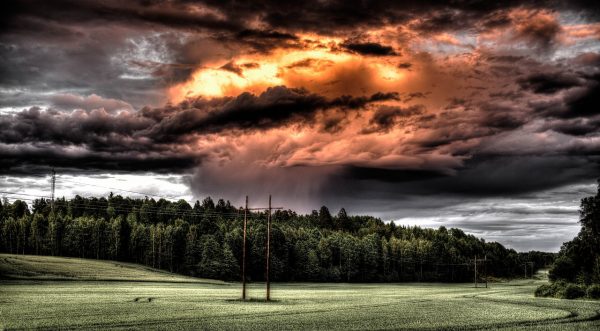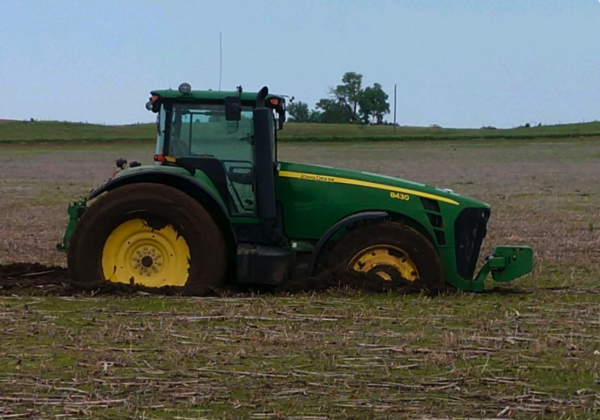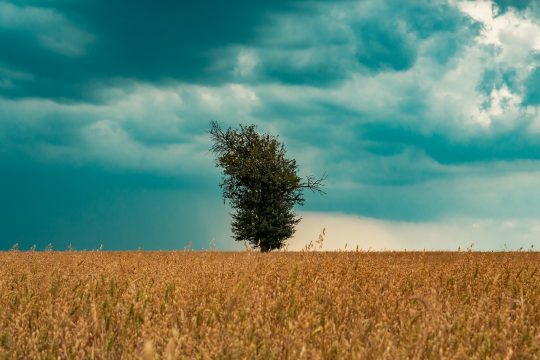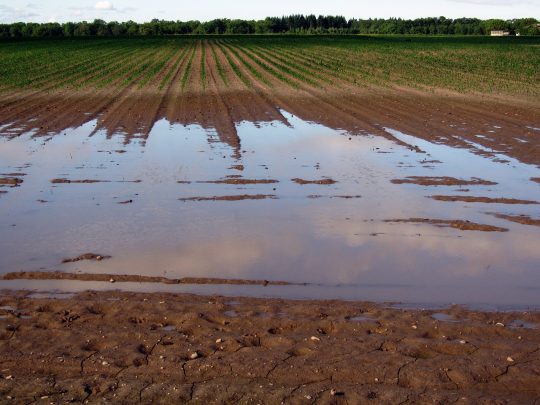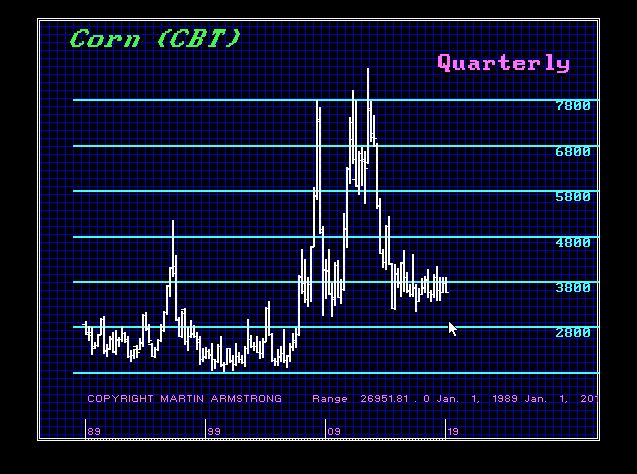Home » Posts tagged 'farming' (Page 6)
Tag Archives: farming
Dutch Farmers in Mass Revolt Against Green Fascism
Dutch Farmers in Mass Revolt Against Green Fascism
Demonstrators cause huge traffic jams in backlash against threat to livestock production.

Thousands of Dutch farmers descended on the Netherlands capital to protest against onerous environmental restrictions that threaten their livelihoods.
The demonstrations were sparked after the coalition government proposed that “Dutch livestock farming should be slashed to meet commitments on reducing nitrogen emissions,” reports Dutch News NL.
Farmers traveled to the Hague in their tractors, causing tailbacks in excess of 620 miles and huge traffic jams around and in the city.

Farmers are protesting in the Netherlands and it is now the biggest traffic jam we’ve ever seen, thousands of tractors are driving on the highways right now #boerenprotest is even worldwide trending on twitter right now
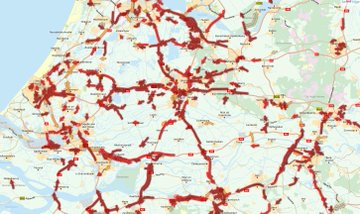


Some protesters also used their tractors to demolish fences that been put up by the government.
…click on the above link to read the rest of the article…
‘Fall Armyworm’ Invades China; Wreaks Havoc On Agriculture Lands
‘Fall Armyworm’ Invades China; Wreaks Havoc On Agriculture Lands
China’s agriculture ministry warned in June that it found fall armyworms in 21 provinces, across 333,000 hectares of crops.
Fall armyworms (Spodoptera frugiperda) are a destructive garden pest that can destroy a variety of crops as well as grasses.
Chinese officials are worried about prevention and control measures of the pest might be failing, which could lead to crop losses this year.
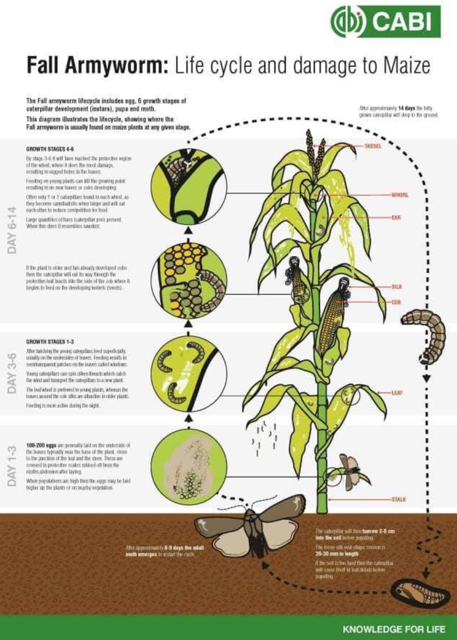
Beijing warned fall armyworms could damage hundreds, if not thousands of hectares of crops, leading to possible food security issues for the country.
To counter the pest, China has requested farmers in the 21 provinces to use government-approved pesticides.
The “heart-devouring worm” – as locals call it – has spread almost 1,900 miles north since migrating from neighboring Myanmar earlier this year, now threatens 21 provinces and regions in China and could heavily impact the country’s grain output.
In Yunnan, a province in southwestern China, the pest has already destroyed 86,000 hectares of corn, sugarcane, sorghum, and ginger crops.
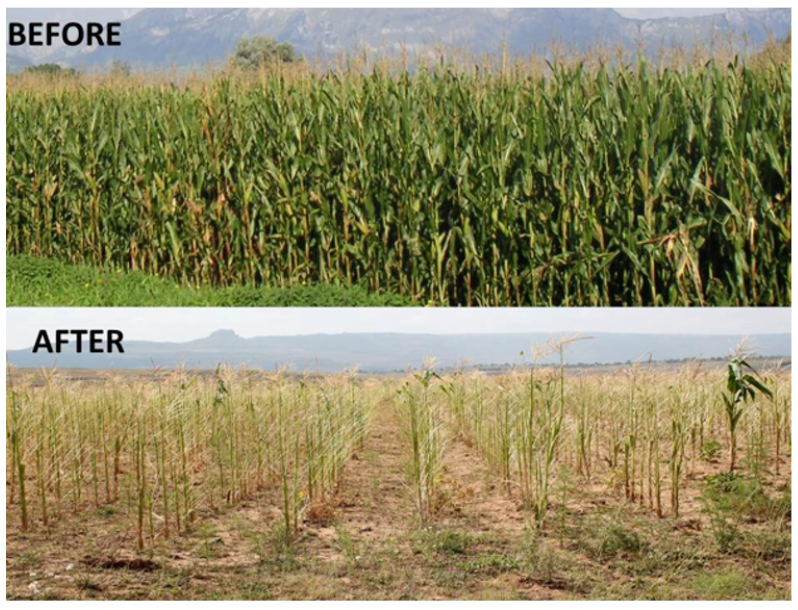
Fall armyworm started to spread through Africa and Asia in 2016, these pests, which are moths, fly 60 miles per night, is very challenging for farmers and governments to exterminate.

The pests have strained small farmers, who produce at least 90% of the country’s crop.
In hard-hit Yunnan, the local government has installed 3,500 monitoring sites at farms to observe the pests and agriculture conditions, the provincial agriculture bureau wrote to Reuters via email.
Farm Rot is Eating America Alive
Farm Rot is Eating America Alive

American politics covers up the bleeding of nature
Listen to the Democratic presidential candidates Senators Bernie Sanders and Elizabeth Warren. They promise a more democratic, equal, just, compassionate and civilized America. But the statistics they cite are numbing. Millions of Americans are living paycheck to paycheck. Additional millions have no medical insurance. Three billionaires own as much as 150 million Americans. Hundreds of thousands of people are homeless.
How different is this picture from the picture of France on the eve of the French Revolution? Inequality alone says not much. In contrast to the French, we “elected” king Trump. He owns several Versailles.
This distressing political reality in 2019 America is riddled with the bullets of madmen. Young Americans, desperate for meaning and a future, arm themselves for a minute in the TV Sun. They hear Trump badmouthing the non-white immigrants from Mexico and Central America and resort to the mayhem of El Paso, Texas, and Dayton, Ohio: killing innocent Americans and immigrants, the anger of the killers finding a murderous outlet.
In this condition of domestic upheaval, Americans have no time or interest for anything else. They are obsessed with survival. They see Congress and the Supreme Court and the White House taking care of the billionaire class, as Senator Sanders rightly defines the tiny minority of wealth and power behind the broken government in Washington, DC.
Meanwhile, Trump is like an extraterrestrial despot visiting Washington, DC, in order to keep the White House in perpetual chaos, play golf in his exclusive resort in Florida, and tweet his orders to the world.
This political reality could be out of a fictional best seller, but it is not. It dazzles, confuses, and angers Americans. Trivia becomes king.
…click on the above link to read the rest of the article…
Crops Devastated As More Ferocious Storms Pound The Midwest – “It’s Hard To Get Your Head Around Just How Bad It Is”
Crops Devastated As More Ferocious Storms Pound The Midwest – “It’s Hard To Get Your Head Around Just How Bad It Is”
It has gotten to the point where maybe we should just expect violent storms to hammer the Midwest every single day of the week. Highly destructive storms ripped through the Midwest on Tuesday, it happened again on Wednesday, and the forecast calls for more powerful storms on Thursday. This growing season has been a complete and utter nightmare for U.S. farmers, and each day it just gets even worse. Millions of acres will not be planted at all this year, but an even bigger problem is that fact that crops are dramatically failing on tens of millions of acres that were actually planted in time. Every major storm does even more damage, and that is why what we have witnessed so far this week has been so alarming.
For example, on Tuesday the middle of the country was absolutely pummeled by “more than 120 damaging storms”…
More than 120 damaging storms were reported from Montana all the way to Florida on Tuesday, a barrage that included 70 mph winds from Texas to Illinois, golf ball-sized hail Nebraska and up to half a foot of rain in parts of southern Iowa.
Then on Wednesday a series of severe storms dumped enormous amounts of rain “from Washington state to Illinois”.
And of course we aren’t done yet. According to AccuWeather, Thursday will be another very rough day for the heartland…
More severe weather is likely on Thursday over parts of the North-Central states.
The storms may take a more west-to-east track across the northern Plains to the Great Lakes region during Thursday afternoon and night.
…click on the above link to read the rest of the article…
Midwest Flooding Will Cause Shortages of THESE FOODS
Midwest Flooding Will Cause Shortages of THESE FOODS
Floods are dangerous natural disasters. People and animals can be swept away and easily drown. Floods can carry bacteria and pollutants great distances. Floods can bust through levees and tear down bridges. Floods can also lead to food shortages when they destroy farms, like the recent floods in the Midwest have. Smart preppers will take measures to beef up their food storage now.
By now, most US-based preppers have either heard about (or experienced) the massive, damaging floods in the Midwest since this past March. To make matters worse, the potential for more floods in key agricultural states looms in front of us as more rain is predicted for the rest of this spring.
So far, heavy flooding has impacted important agricultural states, including Nebraska, Iowa, Illinois, and Missouri. From NOAA:
“Additional spring rain and melting snow will prolong and expand flooding, especially in the central and southern U.S. As this excess water flows downstream through the river basins, the flood threat will become worse and geographically more widespread.”
Let’s take a look at why this is happening, what are the real risks involved, and what steps you can take to keep you and your loved ones fed and safe during a food shortage.
What Caused the Floods
Last fall brought heavy rains which soaked the ground heading into winter. The frozen winter earth was covered in heavier than normal snowfall. As warmer temperatures arrived in early spring, the snow began to melt, but the ground remained frozen underneath.
This would have resulted in minor flooding, except that heavy rains followed. According to The New York Times,
“The flat, frozen land, unable to soak in much of the water, spread it fast and furious, the way liquid would spread across a tiled floor. And the runoff quickly filled many rivers and streams to overflowing.”
…click on the above link to read the rest of the article…
How much will the US Way of Life © have to change?
How much will the US Way of Life © have to change?
On the future of farming, socialist science, and utopia

Debates about the Green New Deal—Ocasio-Cortez’s version and occasionally radical varieties such as that of the US Green Party—have incited much discussion about paths to utopia. Central to these conversations is the labour question: who will do the work of making the world, and how will that work be apportioned? And how much will the US Way of Life © have to change?
Ecologically-minded socialists and degrowthers tend to point out that cheap energy and excess material use are built into the socio-technical structures of capitalism. Getting rid of capitalism requires replacing capitalist technology. We must build, literally, a new world, which may require more labour and much lighter consumption patterns in the core, especially among the wealthy. Eco-socialists also tend to be more attentive to agriculture’s role in development in the periphery and core.
Eco-modernists tend, instead, to focus on eliminating exploitation while maintaining as much as possible of the physical infrastructure and patterns of consumption of capitalism. They imagine machines that will take the place of the current ecologically destructive physical plant, including in the countryside—prototype AI bots to supplant fruit pickers, or non-existent carbon-dioxide-sucking machines in place of restorative agriculture, a proven method of sequestering atmospheric carbon. Very frequently, they imagine a totally post-work world, creating the conditions for a new utopia: Fully Automated Luxury Communism.
Those who hold the latter position often forget that the current distribution of labour is the fruit of a very specific historical moment, marked not merely by a temporary cheapness of energy—and tell Bangladesh, the Seychelles, or your grandchildren that petroleum is cheap—but specific sectoral allocations of labour in farming, industry, and services in the core states.
…click on the above link to read the rest of the article…
U.S. Farms Are Facing Their Worst Crisis In A Generation – And Now Here Comes Another Monster Storm
U.S. Farms Are Facing Their Worst Crisis In A Generation – And Now Here Comes Another Monster Storm
The combination of the wettest planting season in U.S. history, a catastrophic trade war with China and economic conditions that are brutal for small farms has produced a “perfect storm” for U.S. farmers. Farm bankruptcies have already risen to the highest level in 7 years, but many expect that they will soon surge to all-time record highs. Due to the incredibly wet weather, millions upon millions of acres of prime U.S. farmland will not be planted with crops at all this year. And millions of acres that do get planted will yield a lot less than usual because of the wretched conditions. Meanwhile, the U.S. will export far less corn and soybeans than usual this year due to our trade conflicts with China and Mexico. With much less international demand, U.S. farmers are going to have an increasingly difficult time trying to make a profit on anything they are able to grow. In the end, thousands of farmers will not be able to recover from this crisis and will be forced out of the industry for good.
According to USA Today, “a near biblical parade of misfortune” has created “the worst farm crisis since the 1980s”…
American farmers already plagued by a near biblical parade of misfortune that includes years of low prices and a trade war with China are now grappling with record Midwest rain that will likely prevent a large portion of this year’s crop from even getting planted.
The troubles have created the worst farm crisis since the 1980s, when oversupplies and a U.S. grain embargo against the Soviet Union forced thousands of farmers into bankruptcy, experts say.
So we can definitely say that this is the worst farm crisis in a generation, but the truth is that this crisis is far from over.
…click on the above link to read the rest of the article…
Due To Cataclysmic Flooding, Millions Upon Millions Of Acres Of U.S. Farmland Will Not Be Planted With Crops This Year
Due To Cataclysmic Flooding, Millions Upon Millions Of Acres Of U.S. Farmland Will Not Be Planted With Crops This Year
It looks like 2019 could be the worst year for U.S. agriculture in modern American history by a very wide margin. As you will see below, millions upon millions of acres of U.S. farmland will go unused this year due to cataclysmic flooding. And many of the farmers that did manage to plant crops are reporting extremely disappointing results. The 12 month period that concluded at the end of April was the wettest 12 month period in U.S. history, and more storms just kept on coming throughout the month of May. And now forecasters are warning of another series of storms this week, and following that it looks like a tropical storm will pummel the region. As Bloomberg has pointed out, we have truly never seen a year like this ever before…
There has never been a spring planting season like this one. Rivers topped their banks. Levees were breached. Fields filled with water and mud. And it kept raining.
Many farmers just kept waiting for the flooding and the rain to end so that they could plant their crops, but that didn’t happen.
At this point it is too late for many farmers to plant crops at all, and it is now being projected that 6 million acres of farmland that is usually used for corn will go completely unsown this year…
There has never been weather like this, either. The 12 months that ended with April were the wettest ever for the contiguous U.S. That spurred other firsts: Corn plantings are further behind schedule for this time of year than they have been in records dating to 1980 and analysts are predicting an unheard-of 6 million acres intended for the grain may simply go unsown this year.
…click on the above link to read the rest of the article…
American Soil Is Being Globalized: Nearly 30 Million Acres Of U.S. Farmland Is Now Owned By Foreigners
American Soil Is Being Globalized: Nearly 30 Million Acres Of U.S. Farmland Is Now Owned By Foreigners
All across America, U.S. farmland is being gobbled up by foreign interests. So when we refer to “the heartland of America”, the truth is that vast stretches of that “heartland” is now owned by foreigners, and most Americans have no idea that this is happening. These days, a lot of people are warning about the “globalization” of the world economy, but in reality our own soil is rapidly being “globalized”. When farms are locally owned, the revenue that those farms take in tends to stay in local communities. But with foreign-owned farms there is no guarantee that will happen. And while there is plenty of food to go around this is not a major concern, but what happens when a food crisis erupts and these foreign-owned farms just keep sending their produce out of the country? There are some very serious national security concerns here, and they really aren’t being addressed. Instead, the amount of farmland owned by foreigners just continues to increase with each passing year.
Prior to seeing the headline to this article, how much U.S. farmland would you have guessed that foreigners now own?
Personally, I had no idea that foreigners now own nearly 30 million acres. The following comes from NPR…
American soil.
Those are two words that are commonly used to stir up patriotic feelings. They are also words that can’t be be taken for granted, because today nearly 30 million acres of U.S. farmland are held by foreign investors. That number has doubled in the past two decades, which is raising alarm bells in farming communities.
How did we allow this to happen?
And actually laws regarding land ownership vary greatly from state to state. Some states have placed strict restrictions on foreign land ownership, while in other states it is “a free-for-all”…
…click on the above link to read the rest of the article…
Crop Catastrophe In The Midwest – Latest USDA Crop Progress Report Indicates That A Nightmare Scenario Is Upon Us
Crop Catastrophe In The Midwest – Latest USDA Crop Progress Report Indicates That A Nightmare Scenario Is Upon Us
The last 12 months have been the wettest in all of U.S. history, and this has created absolutely horrific conditions for U.S. farmers. Thanks to endless rain and historic flooding that has stretched on for months, many farmers have not been able to plant crops at all, and a lot of the crops that have actually been planted are deeply struggling. What this means is that U.S. agricultural production is going to be way, way down this year. The numbers that I am about to share with you are deeply alarming, and they should serve as a wake up call for all of us. The food that each one of us eats every day is produced by our farmers, and right now our farmers are truly facing a nightmare scenario.
You can view the latest USDA crop progress report right here. According to that report, corn and soybean production is way behind expectations.
Last year, 78 percent of all corn acreage had been planted by now. This year, that number is sitting at just 49 percent.
And the percentage of corn that has emerged from the ground is at a paltry 19 percent compared to 47 percent at this time last year.
We see similar numbers when we look at soybeans.
Last year, 53 percent of all soybean acreage had been planted by now. This year, that number has fallen to 19 percent.
And the percentage of soybeans that have emerged from the ground is just 5 percent compared to 24 percent at this time last year.
In other words, we are going to have a whole lot less corn and soybeans this year.
Farmers in the middle of the country desperately need conditions to dry out for an extended period of time, but so far that has not happened.
…click on the above link to read the rest of the article…
Floods And Drought Devastate Crops All Over The Planet – Could A Global Food Crisis Be Coming?
Floods And Drought Devastate Crops All Over The Planet – Could A Global Food Crisis Be Coming?
It looks like global food production could be well below expectations in 2019, and that could spell big trouble in the months ahead. In recent weeks, I have written extensively about the problems that we have been experiencing here in the United States. As many as a million calves were lost to the flooding that hit the state of Nebraska in March, farmers have planted less than half of the corn that is normally in the ground by this time of the year, and a lot of the crops that have been planted in the middle of the country are really struggling due to extremely wet soil. But it isn’t just the United States that is facing a very troubling year. Earlier today, one of my readers sent me an article entitled “Global food crisis ahead as extreme weather events devastate crops and fields around the world”which I would encourage everyone to read. In that article, we are told that after the worst drought in 116 years Australia has actually been forced to import wheat. And according to the Guardian, this is the first time in 12 years that this has happened…
Australia is planning to import wheat for the first time in 12 years after drought across the eastern states saw grain production fall 20% last year.
The Department of Agriculture and Water Resources confirmed this week it had issued a bulk import permit to allow wheat to be brought in from Canada to be processed for the domestic market.
…click on the above link to read the rest of the article…
Total Catastrophe For U.S. Corn Production: Only 30% Of U.S. Corn Fields Have Been Planted – 5 Year Average Is 66%
Total Catastrophe For U.S. Corn Production: Only 30% Of U.S. Corn Fields Have Been Planted – 5 Year Average Is 66%
2019 is turning out to be a nightmare that never ends for the agriculture industry. Thanks to endless rain and unprecedented flooding, fields all over the middle part of the country are absolutely soaked right now, and this has prevented many farmers from getting their crops in the ground. I knew that this was a problem, but when I heard that only 30 percent of U.S. corn fields had been planted as of Sunday, I had a really hard time believing it. But it turns out that number is 100 percent accurate. And at this point corn farmers are up against a wall because crop insurance final planting dates have either already passed or are coming up very quickly. In addition, for every day after May 15th that corn is not in the ground, farmers lose approximately 2 percent of their yield. Unfortunately, more rain is on the way, and it looks like thousands of corn farmers will not be able to plant corn at all this year. It is no exaggeration to say that what we are facing is a true national catastrophe.
According to the Department of Agriculture, over the past five years an average of 66 percent of all corn fields were already planted by now…
U.S. farmers seeded 30% of the U.S. 2019 corn crop by Sunday, the government said, lagging the five-year average of 66%. The soybean crop was 9% planted, behind the five-year average of 29%.
Soybean farmers have more time to recover, but they are facing a unique problem of their own which we will talk about later in the article.
…click on the above link to read the rest of the article…
How A Sustainable Food System Is Built
How A Sustainable Food System Is Built
From the ground up.

We all eat food. Most of us every day. Most of us several times a day.
Food is undoubtedly one of the most constant and impactful aspects of our lives.
And the ways that we produce — and consume it— are impactful as well.
We all know about climate change. Agricultural activities (crop, livestock and fossil fuel) contribute approximately 25% of anthropogenic greenhouse gas emissions — yet around 1/3 of all food is wasted.
15% of the world’s land surface area has been degraded by soil erosion and physical and chemical degradation, while even more is at risk.
Industrial agriculture is using more and more toxic chemicals to control weeds and pests, which put the environment, agricultural workers and consumers at risk.
Farmers now earn less in every dollar that we spend on food, despite rising costs of living, as big companies squeeze (and squeeze).
Rural communities are collapsing, the quality and diversity of food that we produce (and thus eat) is constantly decreasing, neoliberal policies have seen small farmers displaced coupled with a rapid rise in the rate of rural-urban migration.
The rural poor are poorer than ever before, food security issues are rife and malnutrition is one the rise.
Meanwhile, both producers and consumers are disenchanted and dissatisfied with the current state of the industry and the way it’s structured.
In short, many aspects of the way that we produce and consume food is not sustainable.
Something (i.e. a lot of things) needs to change.
Sustainable Agriculture Isn’t Simple
But it’s necessary. Very necessary.
Defining Sustainable Agriculture
I’ve defined sustainable agriculture before but I’ll do so here again, so that we’re all on the same page.
…click on the above link to read the rest of the article…
Are we Heading into a Food Shortage?
Are we Heading into a Food Shortage?
COMMENT: Mr. Armstrong, I find it really distasteful that you laid out events well in advance and then everyone copies you without ever giving you credit. There are articles now appearing about the coming food shortage. The degree of plagiarism is unbelievable. It must be dishearting. I certainly begin to distrust these people and organizations for they certainly even know who you are.
LMS
REPLY: That is life. They are trying to sell something so they have to pretend to do the research to make money by getting people to read. The flooding wiped out stockpiles. Now the planting season is already behind on schedule because of the weather. As I have warned, the computer has been forecasting colder winters and shorter-summers. The planting season will decline and thus the danger of a serious food shortage as we head into 2024.

I previously wrote about the soaring bankruptcies among farmers and combine this with the flooding that continues, I believe the computer will be on point. I also wrote about how this year, the Russian wheat crop failed has failed because of the bitter cold with even April coming in as the coldest in more than 140 years. To make matters worse, our computer warns that the weather will not improve. The next 4 years will put even more financial pressure farmers. Even in Australia, the drought is sending the “roos” invading the cities and they like to feed precisely during Rush Hour. The drought is so bad in Australia, that animals are dying for lack of feed crops.
…click on the above link to read the rest of the article…
The Company Store
The Company Store
Leaves almost nothing to live on
In the song Sixteen Tons by Merle Travis (and made famous by Tennessee Ernie Ford), the idea of the ‘company store’ referred to a system of debt bondage that effectively trapped workers within an unfair system designed to harvest all of their labor at very low cost.
You load sixteen tons, what do you get?
Another day older and deeper in debt
Saint Peter don’t you call me ’cause I can’t go
I owe my soul to the company store
Sixteen Tons – Merle Travis
How exactly did the company store system operate?
Under a scrip system, workers were not paid cash; rather they were paid with non-transferable credit vouchers that could be exchanged only for goods sold at the company store. This made it impossible for workers to store up cash savings.
Workers also usually lived in company-owned dormitories or houses, the rent for which was automatically deducted from their pay.
This model was simple enough to understand. “Pay” your workers with scrip vouchers, then sell them your marked up goods at the company store, pocketing a nice profit. On top of that, force your employees to live in company housing, too, also at terms very favorable to the company.
Add it all up and the workers found themselves in perpetual service to their employer. No matter how hard and long they toiled, there was nothing left for their own private benefit after all was said and done. The company succeeded in skimming off any and all ‘excess’ for itself.
This vast unfairness eventually led to the formation of unions as well as to regulations providing protection to the workers.
…click on the above link to read the rest of the article…



